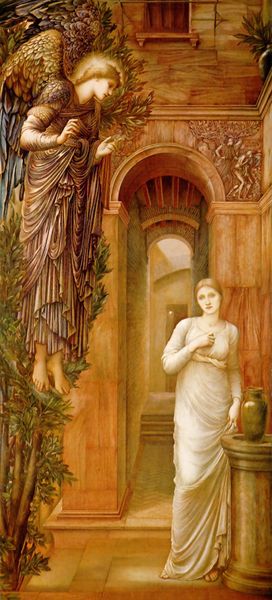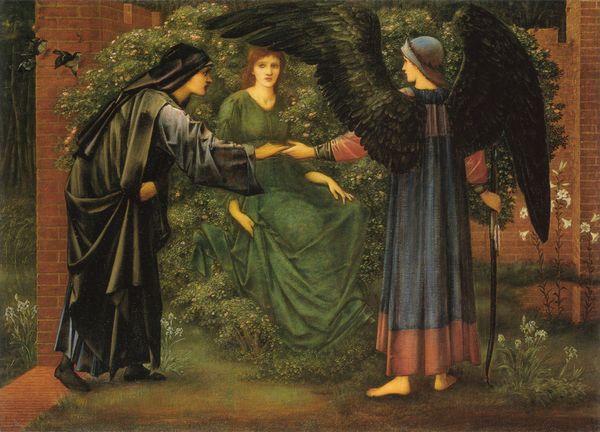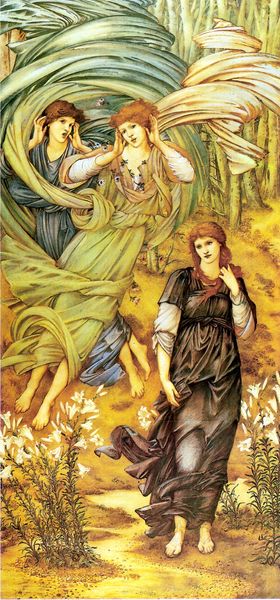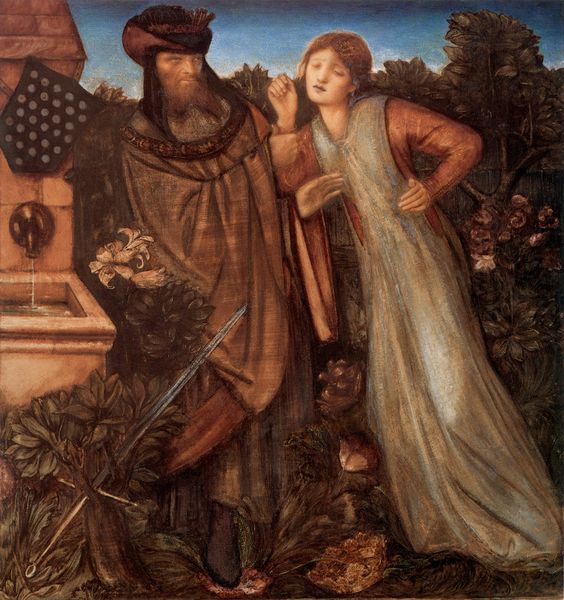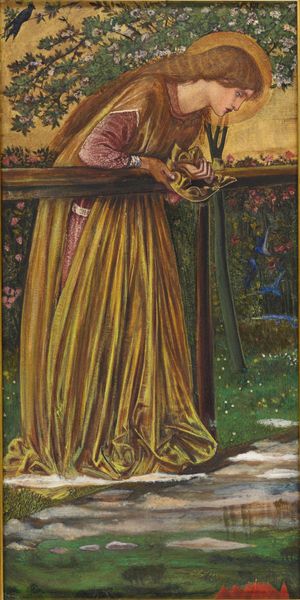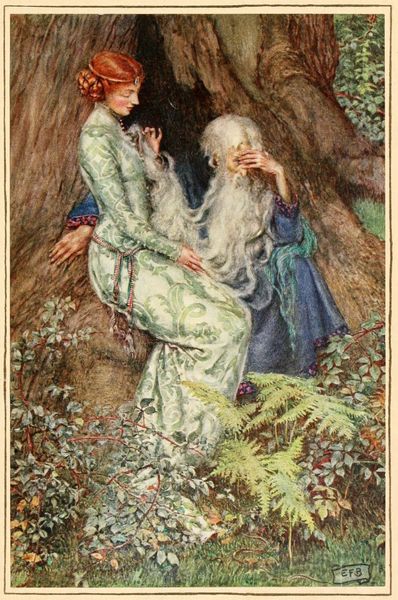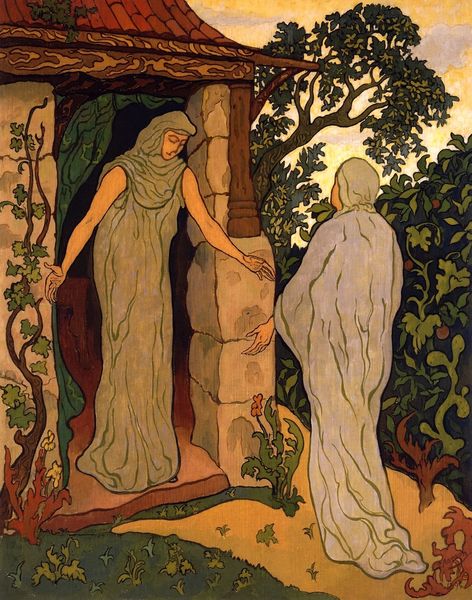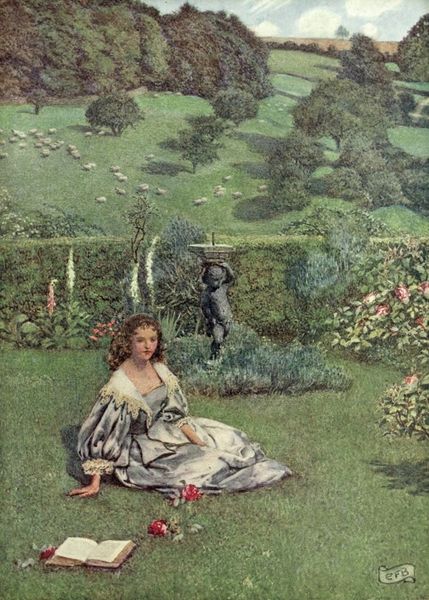
painting, oil-paint, watercolor
#
portrait
#
gouache
#
narrative-art
#
painting
#
oil-paint
#
landscape
#
oil painting
#
watercolor
#
romanticism
#
watercolour illustration
#
genre-painting
#
pre-raphaelites
#
watercolor
Dimensions: 39.5 x 30 cm
Copyright: Public domain
Curator: Arthur Hughes's piece, "Aurora Leigh's Dismissal of Romney - (The Tryst)", completed around 1845, invites us into a very intimate moment. Editor: The first thing that strikes me is the tonal contrast, this stark separation between the shadowy figure on the left and the luminous woman in the garden light. Curator: Absolutely, the symbolism is rich here. The woman, presumed to be Aurora, stands near flourishing life, holding what looks like a book, indicative of intellect and self-determination. In stark contrast, Romney seems to fade into a darkness punctuated by lilies, which, traditionally, can symbolize mourning and, perhaps ironically, purity. Editor: It’s interesting how the composition uses light to carve out a sense of emotional and intellectual distance. The texture, that Pre-Raphaelite attention to detail, especially in the foliage, really amplifies the spatial depth and enhances the subjects, especially Aurora, while simultaneously casting shadows around Romney. Curator: It does invite a consideration of gender roles in that era, doesn't it? She is active, possessing agency over her own destiny and her position next to the trees on the right of the canvas helps provide some narrative context in this intimate scene; while he’s recessive, almost a haunting figure. It’s about rejecting societal expectations of women. Editor: The Pre-Raphaelites definitely employed a strong visual language. Aurora is visually pulled towards the light, the book becomes almost a prop, while Romney almost disappears, a sort of breakdown, even within the formal arrangement. Curator: He seems almost literally rejected by the very light of her world, a fading figure. He might need those lilies to console him, maybe as some promise of salvation for someone now relegated to life in darkness. Editor: It almost works as an allegory for enlightenment itself. From an artistic viewpoint, the gouache rendering is quite refined, almost seamlessly mixing paint with paper grain into a subtle overall harmony despite the symbolic contrasts that inform our deeper analysis. Curator: Examining Arthur Hughes' artwork "Aurora Leigh's Dismissal of Romney", certainly invites consideration about the personal agency and intellectual liberation against a landscape loaded with poignant symbolism. Editor: Absolutely. It’s interesting how Hughes' use of color and composition directs our gaze, ultimately underscoring the changing social dynamics inherent in this powerful scene of a woman standing up for herself.
Comments
No comments
Be the first to comment and join the conversation on the ultimate creative platform.
